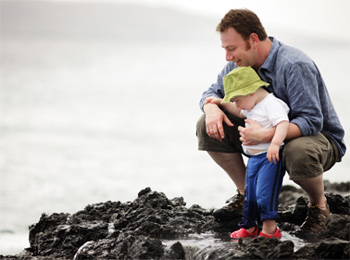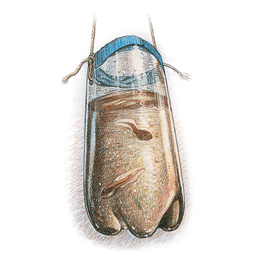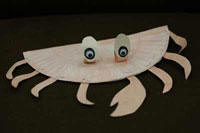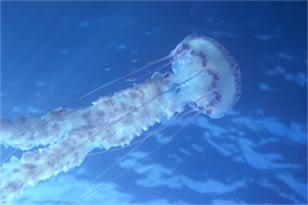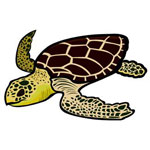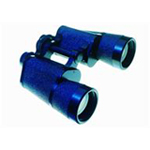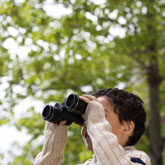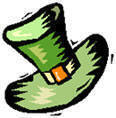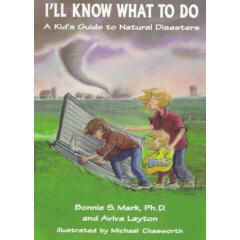Scientists believe that life on Earth began in the ocean, approximately 4 billion years ago. And in fact, it was only about 500 million years ago that life emerged from the ocean onto the land. That means that ocean life has existed 8 times longer. So no matter how unimaginably long it was since the first creatures crawled out on land... to the age of the dinosaurs... to our time, all of that is but a small slice of the pie compared to the vast span of time in which the oceans have nurtured life. And even today, although living things now exist on nearly every part of the Earth's surface, in so many different forms, the ocean continues to be critically important to life on Earth.
To begin with the ocean covers 70% of the Earth's surface
and is still the home of the majority of Earth's living creatures.
Secondly, the oceans
are a vital part of the water cycle that brings rain to our crops and
forests -- and drinking water to our cities. And the ocean also produces
much of the oxygen upon which all human beings, and animals, depend.
Many of our recent medical and scientific breakthroughs have been made
possible in one way or another through ocean based research. Finally, the oceans provide fish and shellfish and other vital resources
upon which humans depend, including jobs for millions of people. In
fact, in the United States alone,
1 out of 6 jobs is marine related. And of
But the ocean's role doesn't end there. Because it's so vast and deep the ocean absorbs much of the heat and light that comes from the sun. In fact it is so deep (average depth about 13,000 feet, with a maximum depth of 36,198 feet), that sunlight can't even reach the ocean floor in most places. The sunlight, and it's warmth, seems to simply fade away as you go deeper into the ocean. But what really happens is a bit more complicated. In actual fact, there are currents at work within the ocean, causing the warm and cold water to move in complex patterns that control how the heat from the sun gets redistributed around the planet. And these warm and cold ocean currents actually help drive our weather patterns. In fact, did you know that if the North Atlantic current stopped pulling warm water north toward England, it could plunge England and all of Northern Europe into another ice age? Here's another fascinating ocean fact: the vast majority of ocean creatures live in the waters of the continental shelves, in the band of shallower water that surrounds each continent (before the drop off into the vastly deeper waters of the open ocean). And yet a single study of a single small section of the deep ocean yielded 898 species -- half of them previously undiscovered. All this in an area half the size of a tennis court! If this is what can be found in the relatively less populated ocean depths, imagine what would be found in a similar sized area located on the continental shelf! What's more, given the variety of life that exits in the oceans' different depth and temperature zones, and oceanic regions, we can only imagine what remains to be discovered out there in the deep recesses of the ocean.
And yet as we said, much of the life in the seas exists relatively close to land. Which means it is also close to human beings and their pollution -- including run-off from dirty city drains and from farmlands that use pesticides and artificial fertilizers. All of this disrupts breeding cycles and food webs and brings the delicate balance upon which our fisheries depend into jeopardy.
This is why we've included resources below that
you can use to educate yourself and others about caring for the ocean
and the creatures that live there. We've also included plenty of
fascinating fact sources about different marine habitats and their
underwater inhabitants. And of course, since learning about
the ocean is so much fun, we'll be adding plenty of craft and activity
resources for younger children. Enjoy! Why The Ocean Matters
Build an Underwater Viewer You can use an empty coffee can or large size plastic yogurt container to create this classic tool for outdoor pond or creek exploration. Cut the end off the container (use a can opener on the metal coffee can). If you wish, cover the rough ends where cut with duct tape. You now have a waterproof tube. Next, cover one end of the tube with sturdy plastic and fix it in place with a large rubber band, such as the one that binds your Sunday newspaper. If you don't take the paper, ask a neighbor for one or pick some up at the craft store. A piece of thin elastic may also be used. To use your viewer, place the plastic covered end into the water and submerge the viewer part way. As the water presses on the plastic it's shape changes from flat to concave, creating natural magnification.
Portable Viewing Tank Save those small clear containers that your salads come in from the deli department and reuse them as portable viewing tanks. These are wonderful for dipping in ponds, creeks, and tide pools -- and for keeping small water creatures in for temporary viewing. Small fish, tadpoles, crabs, and crayfish are wonderful to observe up close. And a clear container affords a view from all sides of your small guest!
NOTE: Always treat the creatures you capture gently, and always put them back where you found them before you leave their habitat. This keeps them safe, makes sure there will be plenty for future visitors to the habitat to see, and it practices the important values of compassion and good stewardship.
Arts & Crafts
Glitter-Sand Seahorse and Starfish For this craft you will need to first cut out shapes of a seahorse or a starfish, and for this you can use our printable patterns. Please note: Paper size is 11x17. If using 8.5x11 printer paper, just use the "poster" setting. (To do so: select "print", then "properties" and then "page setup". Then browse "page layout" to select "poster". Then just tape your pattern together, cut away excess paper, and you will have your shape.) Patterns are the perfect size to lay out together on 12x18" construction paper. Choose assorted colors for a colorful array of sea stars and starfish! Click for printable patterns.
Now mix a little gold glitter with clean, dry sand and put it in a shaker bottle (an empty glitter shaker or an old, empty salt shaker will do). And lay out some old newspaper under the area will you will be making your art. Lay your paper shapes on top of the newspaper. Dribble white craft glue onto your seahorse and starfish shapes. You can make interesting designs with your glue or just smear it lightly all over. Now sprinkle the glitter sand onto the glue. Be sure to use plenty. Now shake off off the glitter sand that doesn't stick onto a paper plate or etc. You'll be able to pour it back into the shaker to reuse. Lay your creations out to dry. Later you can hang them up in the house for some nice summertime decorations!
Paper Bowl Jellyfish This is a fun preschooler project that can be done in stages. Start off by letting them paint paper bowls with tempra paint. (To retain a little more shine, and more intense color, mix in some white craft glue with the paint.) Once the paper bowls are painted a nice "jellyfish" color, whatever the children think that should be, you can let them air dry in the sun. Meanwhile, let the children cut crepe paper party streamers into lengths, from 6 to 18 inches. They can also shred and/or split the streamers lengthwise. A nice jagged and uneven surface will add to the proper effect. When the bowls are dry, the children can glue or tape the streamers to the inside of the bowl, using varied lengths. Next, flip the bowls upside down so that the streamers hang down from the inside. And now you have your jellyfish. Adults can punch a couple of holes in the center of the jellyfish and run string or yarn through in order to hang the jellyfish from the ceiling. For a Wild indoor aquatic environment, line the ceiling with blue bulletin board paper. Staples and/or tape can hold it in place. Now hang your sea creatures. Add jagged strips of green crepe paper to be the "seaweed"! Add your seahorses and starfish. What other creatures can you add? See the ideas below.
Make a Sea Creature Mobile
From About.com
Preschool Arts & Crafts -- Ocean From PreschoolEducation.com
Fish Themed Activities & Crafts Preschool learning ideas from the Activity Idea Place |
|
Games, Fish & Marine Mammal Facts, Strange Secrets of the Ocean
Marine Biology: The Living Oceans A fun kid-friendly site that covers a variety of ocean and marine life topics. Includes fun activities.
Discover marine creatures from the tiny zooxanthellae that make the coral reefs home to the giant mammals of the vast seas in this series of brief overviews of various marine ecosystems. Surf their site to learn about fresh water ecosystems and other biomes as well!
Features 5 live cams, including the penguin cam and the otter cam! Be sure to check out their great Games & Activities coloring pages, sea seaerchers handbook, and info about aquarium careers.
A comprehensive and informative site covering many ocean topics, including formation, physical features, tides, zones, and even the water cycle. Includes some lesson ideas as well.
An interactive story for kids aged 4-7. Just click on "Chapter One" to get started. (Also available on CD Rom.) Remember to click on the speech bubbles to advance the story.
Puffy the Puffers Book of Fun Fish Facts Fun worksheets to test your knowledge of marine biology.
Tons of jellyfish facts to whet your fancy. Be sure to especially check out their info on jellyfish safety and dangerous species. Includes lots of photos as well as unusual info, such as keeping jellies as pets and... how to prepare wild jellies for eating.
Learn about sea turtles!
Learn
about the deep ocean and the creatures who live there.
Discusses undersea vents and the strange chemicals soup
around them. Deep Sea Vents: Science at the Extreme
Dive and Discover: Expeditions to the Sea Floor Be sure to check out their excellent section on Hydrothermal Vents!
Angler fish, viper fish, gulper eel and more!
Twilight Ocean (Disphotic) Zone Animal Printouts From Enchanted Learning
Here's a chance to test how much you know about Cetaceans. Don't worry if you don't know one of the answers -- just use your "back" browser button and try again. You can keep trying until you find the right answer. Sponsored by Whale Songs.
Learn about various species of whale. Includes facts, illustrations, and photos. Part of Whales.Org.Au
Want to learn even more about these exciting undersea mammals? Then surf this collection of outstanding links for fun facts, videos, activities and more. Sponsored by KidsConnect.com
SeaWorld Animal Information Data Base Learn about various kinds of whales and other sea animals, plus a huge variety of other animals! Don't miss their cute pictures of their baby animals. Other features include animal sound bytes plus loads of fun games and activities.
Fascinating facts from WildDolphin.org. including anatomy, behavior, and what human interference dolphins really don't like (see harassment). While you're there, find out how you can help them protect wild dolphins and the habitats they depend on. See also: Bottlenose Dolphins
Career Guide to Marine Mammal Care and Training Interested in working with dolphins, seals, or other marine mammals? Check out this helpful advice about how to get started. See also: Strategies for Pursuing a Career in Marine Mammal Science
This excellent listing, hosted by Stanford University's Hopkins Marine Station, features information about a wide range of careers in the marine sciences. It also features listings for internships and links to pages with job listings. Check it out!
More Links for Careers in Marine Science
So You Want to Become a Marine Biologist? Straightforward talk and handy tips about how to prepare for a career in marine biology. Includes information on top schools to attend for training.
Outstanding Book Selections!
Got Questions?
11/27/2015
back to
|
Kids Can...
Giving Service
Taking a Stand Against
Taking A Spiritual
Empowering Children
MORE Fun &
Learning
|
|
Check out our great
Earth's
Kids
Kids
Can Change the World
action pages and Valentine's Day, Easter and Saint Patrick's Day pages for science and craft activities, reading and more!
Every
day is
EARTH
DAY!
Check
out our great fun
activities, art, & learning Wondering about the weather? Don't miss the Earth's Kids special feature on Climate Change & Global Warming!
Learn how to keep your
children safe in the event of a natural disaster. Tips to Teach Kids How to Wash Hands!
|
Copyright Earth's Kids 1999. All rights reserved.

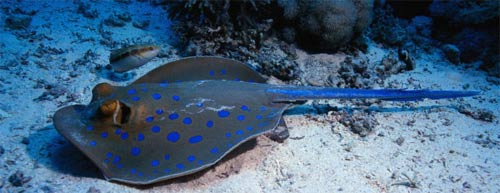

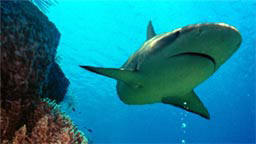 course
ocean based transport, by ships and barges, accounts for some 98% of our commerce with other nations.
course
ocean based transport, by ships and barges, accounts for some 98% of our commerce with other nations.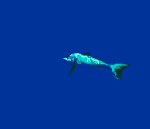
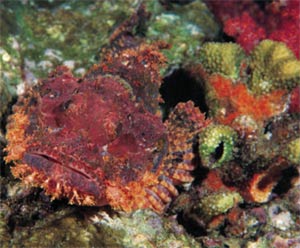
 Ocean Odyssey - Tides &
Waves
Ocean Odyssey - Tides &
Waves